Did you know that a flock of crows is called a murder? Or that starling murmurations are one of the most fascinating displays in the natural world? There are several purposes to flocking. One, there is safety in numbers. Birds can identify and defend against predators easily when grouped. And two, flocking enables them to fly farther and use less energy by creating uplift. Learn to identify groups of birds by discovering the types of birds that flock together.
Blackbirds
New World blackbirds, or icterids, are small to medium-sized passerine birds. And contrary to their name, many in their family have colorful plumage. There are over 100 blackbird species, most of which live in temperate or tropical regions. Populations that breed in the United States and Canada migrate to Mexico and Central America during winter. They flock together in the fall before migrating and often congregate in enormous numbers, occasionally with mixed species flocks that include starlings. Flocking provides many benefits, such as warmth, food availability, and procurement. Blackbirds partake in murmurations, in which the congregation moves in mass with one mind.
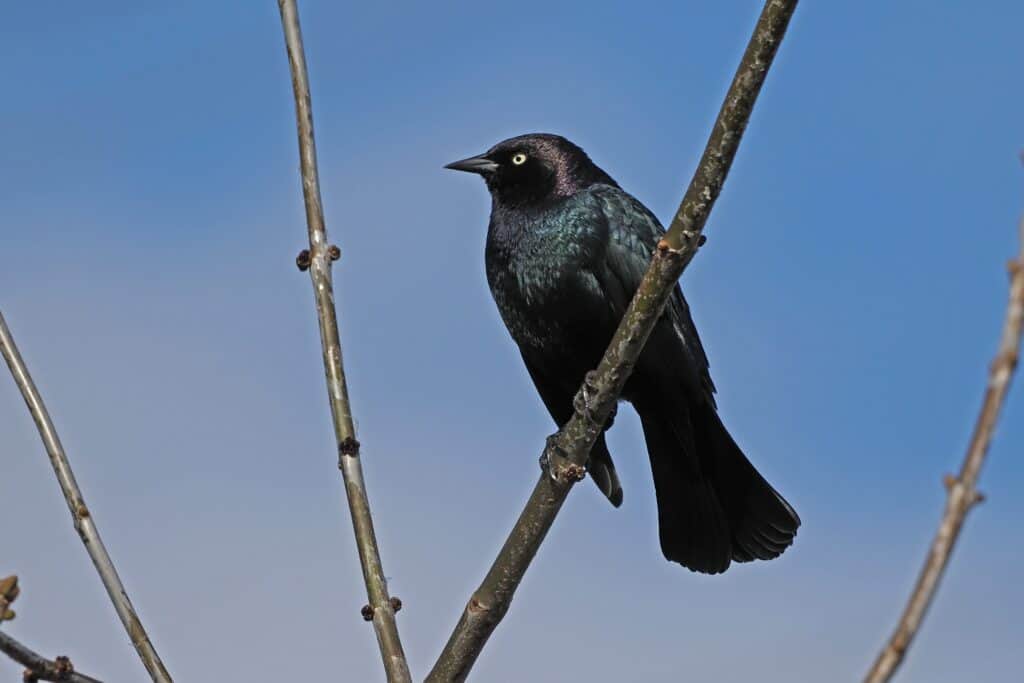
All blackbirds aren’t black.
©John Rakestraw/Shutterstock.com
Starlings
Starlings are small to medium-sized passerine birds with an extensive global range; the only areas they do not occupy are arid deserts. There are hundreds of starling species and even more subspecies, all inhabiting different regions of the world. Some species are migratory, such as the white-shouldered starling, which breeds in Southern China and Northern Vietnam, and winters in Southeast Asia. Most are highly social and associate in large flocks throughout the year. Many grouped bird species belong to larger bird families, but starlings are small birds that flock together. These birds also form murmurations and display swarm behavior when congregating in enormous groups. Starling murmurations are one of the most dazzling displays in the animal kingdom, which features thousands of birds moving as one body with one mind.
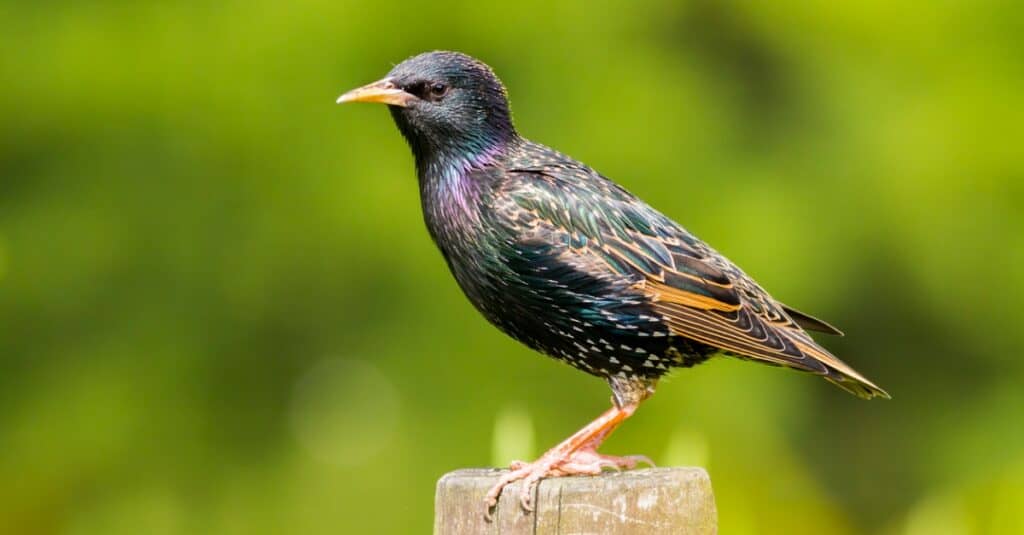
Some species of Starlings are migratory.
©iStock.com/chris2766
Robins
While there are several robin species, the American robin is the most well-known. They are migratory birds that belong to the true thrush genus and are the most abundant bird in North America. Many United States populations live year-round in their environments, while those that breed in Canada and Alaska migrate to Mexico and Central America during the winter. However, these birds don’t wait for the migration to flock; they are active during the day and assemble in large groups at night. They also feed in large flocks, watching nearby birds for signs of predators.
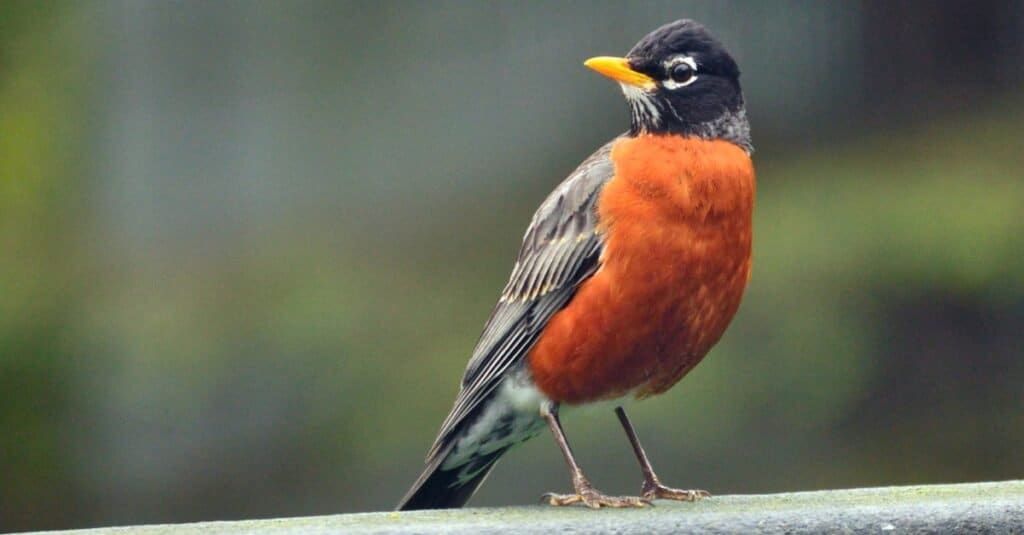
Robins that live in Canada and Alaska migrate to Mexico and Central America during the winter.
©iStock.com/PhotosByMSA
Pigeons
Pigeons are medium to large birds from the Columba genus. There are over 30 pigeon species, and they reside in various habitats worldwide. The most common city pigeon, or domestic pigeon, is a subspecies of rock dove often seen near human habitations. Unlike most birds, pigeons do not migrate. They prefer to stay in their environments year-round and easily survive cold winter months. However, they still flock together. Sometimes they form small groups of 20 or so, while other times, you can find them in huge gatherings numbering in the thousands. They use their tight-knit groups for protection, and they stay together in the presence of predators for the greater flock’s good.
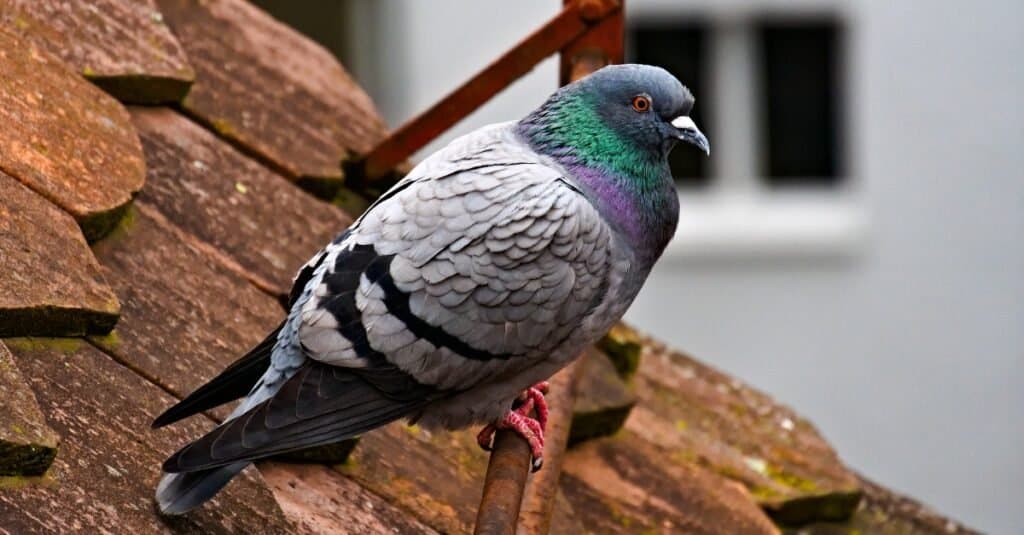
Unlike most birds, pigeons do not migrate.
©iStock.com/Christian Sturzenegger
Flamingoes
Flamingoes are popular bright pink wading birds found throughout the Americas and Afro-Eurasia. These colorful birds are noisy, highly social creatures who spend their lives in warm regions of the world. They are almost always found in flocks in the wild, and their groups can number thousands during the breeding season. A group of flamingoes is called a flamboyance. They use a flocking system for protection while their heads are down in the mud. These species are also known for making friends for life. They form buddies with other flamingoes, which helps them live longer lives.
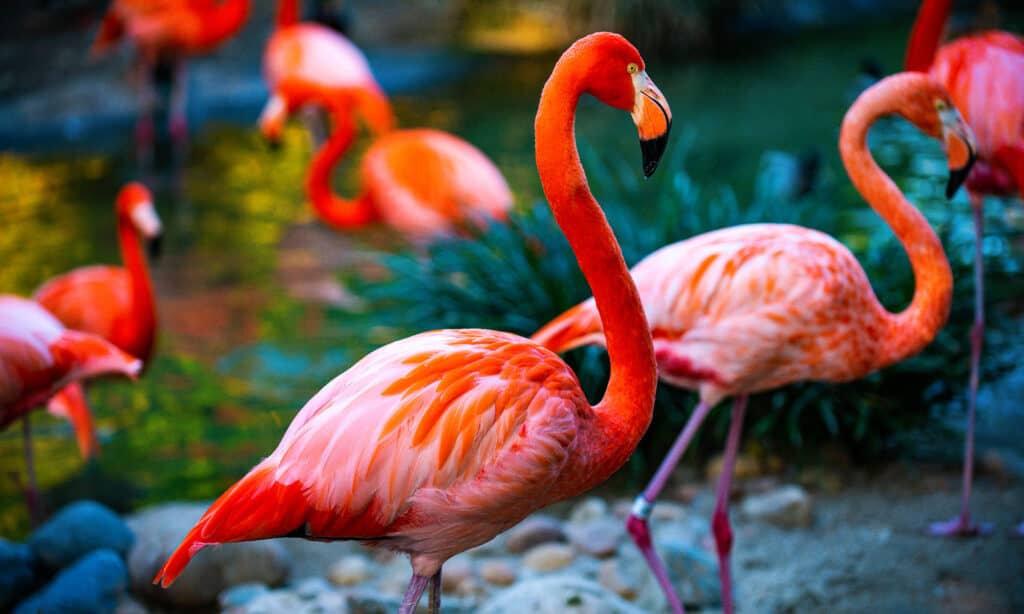
A group of flamingoes is called a
flamboyance.
©Volodymyr TVERDOKHLIB/Shutterstock.com
Cranes
The cranes are a bird family comprising long-legged, long-necked, wading birds with a cosmopolitan distribution. Cranes are solitary and territorial during the breeding season but are gregarious during the winter, forming large flocks to roost, feed, and socialize. Like other flocking birds, cranes use large groups to defend themselves from predators. But they also use sedges (a group of cranes) to increase the likelihood of unmated birds finding a partner. Sandhill cranes form enormous groups (tens of thousands) on their wintering grounds and fly together during migration. You can often find them flying extremely high over the skies of North America.
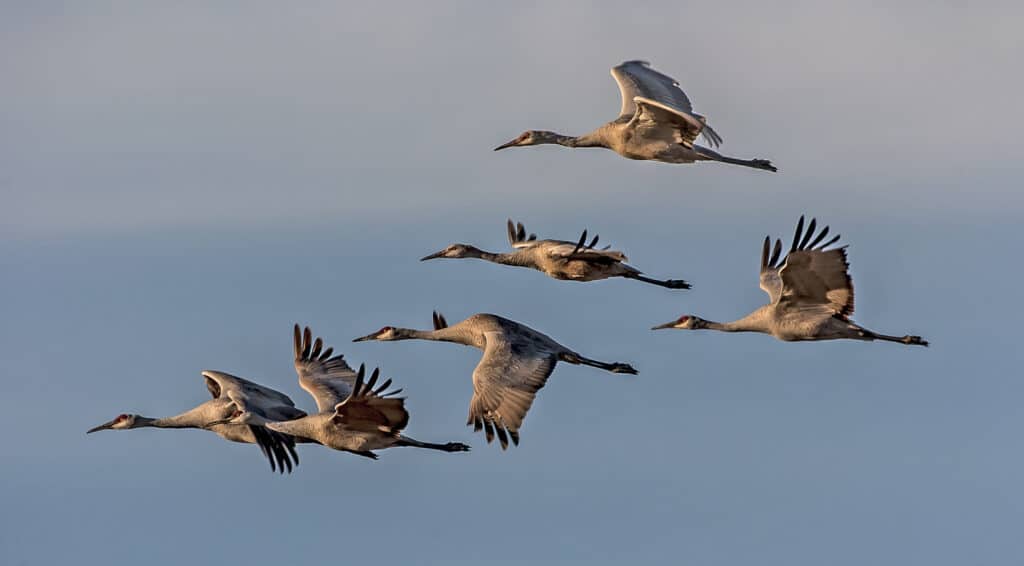
Sandhill cranes use sedges (a group of cranes) to increase the likelihood of unmated birds finding a partner
©Tom Zeman/Shutterstock.com
Storks
Storks are another group of long-legged, long-necked wading birds, but they prefer drier regions like grasslands and savannas compared to other waders. Several stork species are found worldwide, and many are migratory, moving to warmer climates during the worst of winter. These birds are very social, forming a muster or phalanx. A muster of white storks can reach thousands of individuals, which they form during migration and on wintering grounds. Groups of 50 or more will also gather during the breeding season and nest together.

A muster of white storks can reach thousands of individuals.
©Breck P Kent/Shutterstock.com
Egrets
Egrets are technically herons and belong to another group of long-legged wading birds. These birds have an extensive range, inhabiting every continent while avoiding the coldest regions, arid deserts, and extremely high mountains. They are primarily solitary but will congregate in large numbers during breeding. They prefer to nest in these large colonies over water as it provides security and safety from predators. Egrets also migrate in small groups and may forage in mixed flocks. A group of egrets is called a sedge, siege, skewer, or congregation.

A group of egrets is called a sedge, siege, skewer, or congregation.
©iStock.com/Donyanedomam
Geese
Geese comprise several waterfowl species and can be found over much of the world. You can find them in ponds, lakes, marshes, and fields. But also near human habitations, at city parks, schools, and golf courses. Geese are highly social animals, and when they are in a group, they are referred to as a gaggle. They form pairs during the breeding season but are rather gregarious the rest of the year. Geese often forage together, taking advantage of the same food supply. They migrate in large flocks for easier travel.
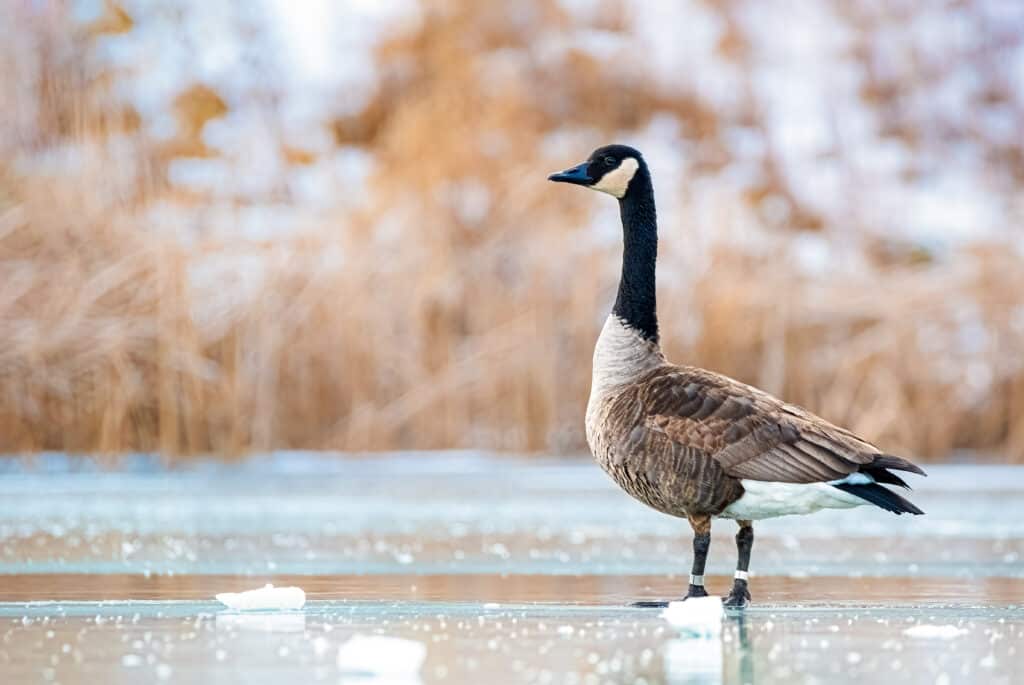
Geese comprise several waterfowl species and can be found over much of the world.
©Rogney Piedra Arencibia/Shutterstock.com
Pelicans
Pelicans are large waterbirds with a patchy distribution across temperate and tropical regions. There are eight living pelican species, and you can often find them in coastal and inland waters. Like most waterfowl, these birds are social creatures that gather in large groups for safety and convenience. They travel in flocks, and you can often observe them strung out in a line. They also hunt cooperatively and breed in groups called colonies, gathering on islands. Pelicans are loyal to their groups for at least one year. They establish colonies and remain a part of the colony for much of the year.
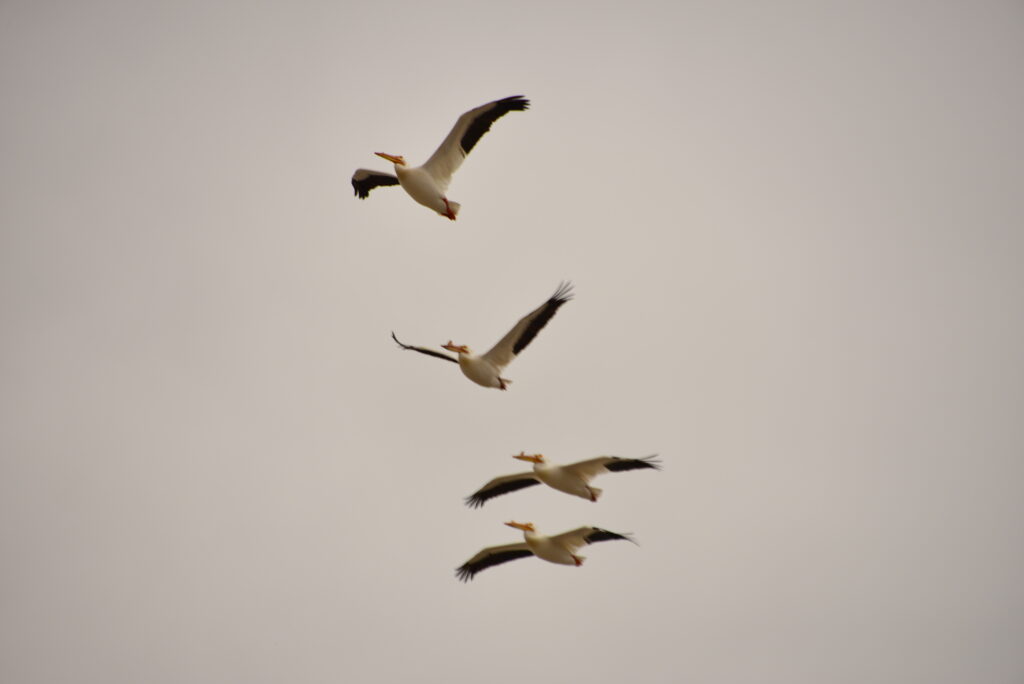
Pelicans are large waterbirds with a patchy distribution across temperate and tropical regions.
©iStock.com/Elizabeth Lara
Crows
Crows are large passerine birds found throughout most of the world. The Corvus genus includes crows, ravens, and rooks, all of which form flocks. These species are known for being loud, intelligent, and extremely social. Crows sleep in mass communal roosts at night and disperse into smaller groups during the day to forage. Researchers believe they bring back knowledge of food sources to the group and use their extensive community for protection, warmth, and social opportunities. Crows have a bad rap for symbolizing death and possible negative transformations, so it doesn’t help that a group of crows is called a murder.

Crows have a bad rap for symbolizing death so it doesn’t help that a group of them is called a
murder.
©Rudmer Zwerver/Shutterstock.com
Finches
What is an example of small birds that flock together? Finches! Finches are small to medium-sized passerine birds with a worldwide distribution. They are nonmigratory and occupy many habitats, including buildings, backyards, and urban areas. Finches are social birds who enjoy companionship, and a flock of finches is called a charm or a trembling. Most passerine birds are solitary and territorial, but finches prefer to be closely associated with others. They forage and nest in small groups and form hierarchies where females are typically dominant over males. These birds also return to the same area to breed and choose the same nest site each year, so they get to know their neighbors well.
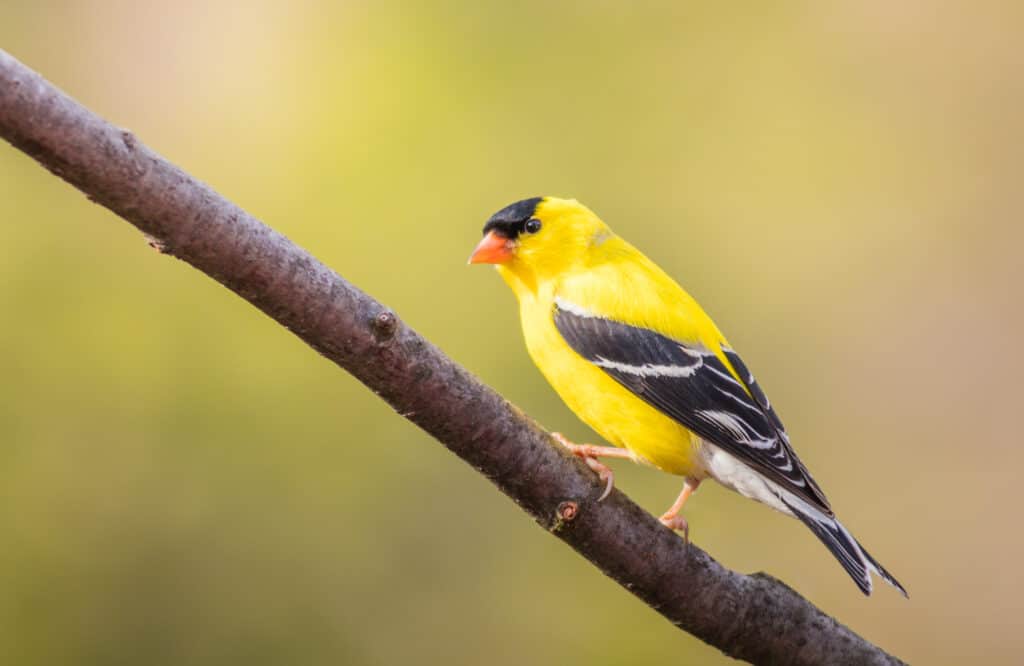
A flock of finches is called a
charmor a
trembling.
©Rabbitti/Shutterstock.com
Large Birds That Flock Together
- Pigeons
- Flamingoes
- Cranes
- Storks
- Egrets
- Geese
- Pelicans
- Crows
Small Birds That Flock Together
- Blackbirds
- Starlings
- Robins
- Finches
Up Next:
The photo featured at the top of this post is © Krasula/Shutterstock.com
Sources
- rspb.org.uk, Available here: https://www.rspb.org.uk/birds-and-wildlife/natures-home-magazine/birds-and-wildlife-articles/features/why-birds-flock-together/
- ui.charlotte.edu, Available here: https://ui.charlotte.edu/story/what-can-flocking-blackbirds-winter-teach-us
- nationalgeographic.com, Available here: https://www.nationalgeographic.com/animals/article/flamingos-make-friends-for-life
Thank you for reading! Have some feedback for us? Contact the AZ Animals editorial team.







